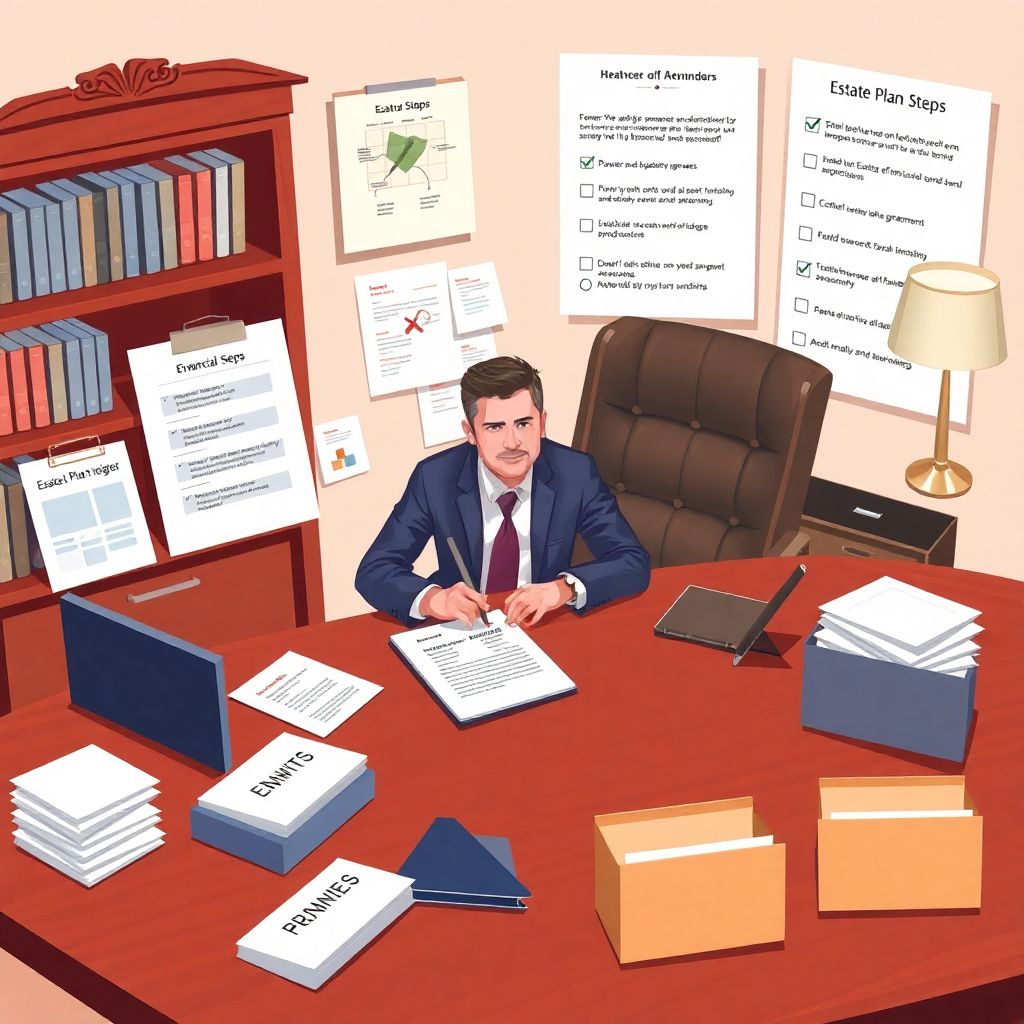Understanding Estate Planning: A Strategic Foundation

Estate planning serves as a financial and legal framework that ensures your assets are managed and distributed according to your preferences after death or incapacitation. For busy professionals, especially those with accumulating wealth, it is a fundamental part of long-term planning. Without a clear estate plan, even a high-income individual risks leaving behind confusion, tax burdens, or prolonged legal disputes for their family. Therefore, recognizing its utility early—and implementing it effectively—is key to preserving financial intentions and minimizing chaos.
Essential Tools of Estate Planning
To create a robust estate plan, several crucial components are commonly involved. These instruments not only dictate asset distribution but also protect your medical and financial decisions if you’re unable to do so yourself.
1. Will: A foundational document stating who inherits your property.
2. Revocable Living Trust: Enables seamless asset transfer while avoiding probate.
3. Durable Power of Attorney: Assigns someone to manage your finances if you’re incapacitated.
4. Healthcare Proxy and Living Will: Dictates medical wishes and appoints a decision-maker.
5. Beneficiary Designations: Ensures retirement accounts, insurance, and investment assets bypass probate.
Busy professionals often overlook updating these documents after life changes, which can render parts of an estate plan ineffective or outdated.
The Step-by-Step Planning Process

Creating an estate plan requires a methodical approach that aligns with both personal values and professional commitments. For time-constrained individuals, breaking the process into manageable steps ensures consistent progress.
1. Inventory Your Assets: Include real estate, savings, investments, and digital assets.
2. Clarify Your Goals: Determine how you want your legacy handled—from guardianship of children to philanthropic giving.
3. Consult Professionals: Involve an estate attorney and a financial advisor to personalize legal and fiscal strategies.
4. Draft and Execute Legal Documents: Ensure all necessary instruments are valid under state laws.
5. Review and Update Regularly: Life events like marriage, birth, or acquisition of new assets should prompt a review.
Each step functions as a control point, enabling professionals to customize their planning without disrupting their work schedules extensively.
Troubleshooting Common Pitfalls
Even the most meticulous professionals make critical errors that can undermine their estate plans. These missteps often stem from inattention, misunderstanding, or over-reliance on digital templates.
1. Procrastination: Waiting too long to start estate planning, often due to perceived complexity or time constraints.
2. Inconsistent Beneficiary Designations: Mismatches between listed beneficiaries on insurance or retirement accounts and the will.
3. Failure to Fund a Trust: Establishing a trust but failing to transfer assets into it renders it ineffective.
4. Ignoring Tax Implications: Without tax planning, heirs may face unexpected federal or state estate tax burdens.
5. Lack of Communication: Not informing family members or executors of your plan can cause administrative delays or disputes.
Addressing these issues involves regular reviews, establishing communication channels, and avoiding do-it-yourself solutions where professional support is warranted.
Conclusion: A Proactive Investment in Peace of Mind

Estate planning is not a one-time task, but an evolving process that adapts to your life’s trajectory. For busy professionals, integrating estate planning into broader financial and career strategies ensures not just asset protection but peace of mind. Avoiding common mistakes—such as neglecting updates or misaligning documents—can significantly enhance the plan’s effectiveness. Ultimately, approaching estate planning with diligence and foresight transforms it from a burdensome obligation into a powerful tool for legacy control.

